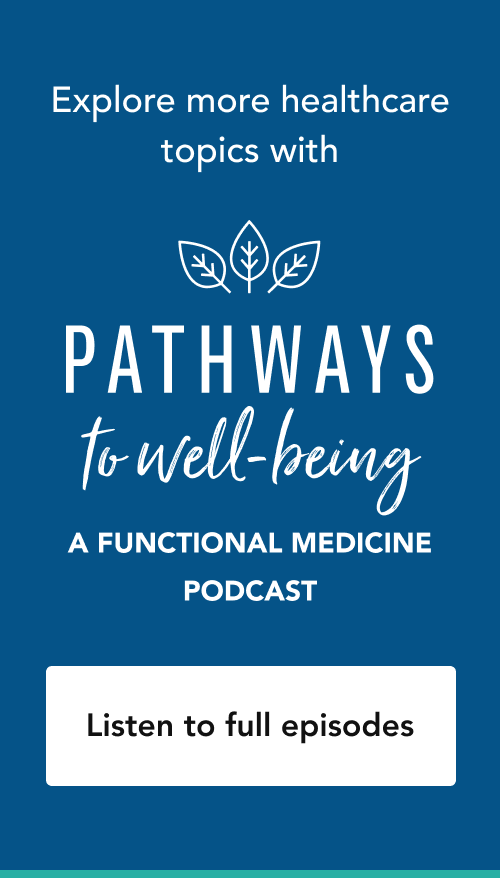podcasts
Toxins and Toxicants as Drivers of Disease

Read Time: 4 Minutes
IFM Director of Medical Education Dan Lukaczer, ND, IFMCP, spoke with integrative medicine leader Joseph Pizzorno, ND, to discuss toxins, toxicants, and chronic diseases. Dr. Pizzorno was a founding member of Bastyr University and is an author, researcher, expert spokesman, and editor-in-chief of PubMed-indexed Integrative Medicine: A Clinician’s Journal. Dr. Pizzorno is also the chair of IFM’s Board of Directors.
In this interview, Dr. Pizzorno shares his clinical insights and discusses his extensive dive into the research literature regarding toxins and toxicants as drivers of disease. In particular, Dr. Pizzorno notes a shift from “active determinants of health,” where the perspective about toxic exposure stems from the lifestyle choices that people make, like smoking habits and alcohol consumption, to “passive determinants of health,” where people are passively exposed to toxic chemicals regardless of their choices. Toxins are usually considered naturally occurring toxic substances while toxicants are man-made. Many people use “toxins” to refer to both toxins and toxicants.
Somewhat independent of people’s choices, the things which in the past have been normally considered healthy, or at least neutral, are now becoming significant sources of toxins for people.
–Dr. Joseph Pizzorno
The following text provides a breakdown of some of the topics discussed, as well as Dr. Pizzorno’s observations and insights.
Environmental Exposure and Diabetes
“I would assert that about 90% of the diabetes epidemic is due entirely to environmental toxins [and toxicants].” –Dr. Joseph Pizzorno
- Sugar consumption alone does not correlate with the diabetes epidemic; exposure to man-made and natural chemicals appears to correlate.
- Environmental toxins and toxicants implicated in diabetes include phthalates (industrial chemicals), PCBs (polychlorinated biphenyls), and arsenic.
- Obesity is still a factor; however, obese people with low levels of environmental exposure do not necessarily have an increased risk for diabetes.
PRIMARY CLINCIAL STEPS FOR PATIENTS WITH DIABETES
“When I talk to doctors, I say to them, ‘Every patient with chronic disease, you must check them for toxins.’” – Dr. Joseph Pizzorno
Check patients for:
- Nutritional status.
- Genetic susceptibility to nutritional deficiencies.
- Environmental exposures.
Measuring Exposure: Identification, Measurement, & Treatment
Dr. Pizzorno mentions the following metals and toxic chemicals that are believed to cause the most disease.
- Arsenic:
- Damages the DNA
- Poisons the beta cells in the pancreas
- A suggested 15% to 20% of diabetes cases are due to arsenic
- Lead
- Mercury
- Cadmium
- PCBs
- Other factors:
- Pediatrics: organophosphate pesticide levels as low as possible
MEASURING TOXIN and toxicant LEVELS
“What’s well accepted is that blood and urine are great measures of current exposure, not particularly good measures of body load.” –Dr. Joseph Pizzorno
- Measuring blood and urine levels may not be sufficient
- Toenail samples to measure arsenic levels
- Hair samples:
- Effective measurement if patient can get rid of toxins and toxicants through hair.
- Due to genetics, some patients will not rid body of toxins and toxicants through hair.
- PCBs: No cost-effective way to measure levels:
- No cost-effective way to measure levels:
- Fat biopsy – best way.
- Blood sample.
- Urine test – most frequently administered, but not a great measure.
- Provoked urine test:
- Use of chelating agents: bind to the heavy metals in tissues.
- Controversial: limited supportive research, error ranges.
TREATMENT CONSIDERATIONS
“I recommend to people, if nothing else, you must get fiber into people.” – Dr. Joseph Pizzorno
- Identify the toxic exposure source and stop exposure.
- Support the body’s own natural methods for biotransformation:
- Eat more fiber.
- Promote glutathione production in the body.
- Vitamin C may increase excretion of toxins and toxicants.
Toxins, Toxicants, and Autoimmunity
“The research is very clear—huge, huge, strong correlations between toxin load and most of your autoimmune diseases.” – Dr. Joseph Pizzorno
Rheumatoid arthritis (RA) as an example:
- Dr. Pizzorno estimates that about 20% of RA cases are due to PCBs.
- Possible mechanism:
- The toxicant binds to normal body tissues.
- Those normal body tissues now become abnormal.
- Then the immune system starts going after them.
PCB Elimination
When attempting to identify a source of toxicity elevation, Dr. Pizzorno suggests looking into exposure pathways. For example, a primary source of PCB exposure is farmed fish.
- PCBs are difficult to eliminate.
- The half-life of PCBs in humans ranges from 3 to 25 years.
- Certain prescription drugs can help remove PCBs from the gut more effectively.
Long Term Ketogenic Diets
“There’s a big price with ketogenic diets that people are not realizing.” – Dr. Joseph Pizzorno
- The human body is incredibly adaptable.
- Diet may not matter much if the diet is:
- Within a “normal” range.
- Food is not contaminated.
- Food is eaten in relatively good diversity.
- Food is rich in nutrients.
- With extreme diets, such as a long-term ketogenic diet, adaptations can become maladaptive.
KETO DIET: EXCESS ACIDITY
- The ketogenic diet is acid-forming in the body.
- Cells become more acidic.
- The kidney has to adapt to excess acidity.
- Pizzorno asserts that as the body becomes more acidic, this impairs glutathione’s ability to bind to environmental chemicals and the body’s ability to produce glutathione.
As you make a person more acidic, they lose bones, they get more kidney stones, and here’s a real big kicker, it also—for some reason—it impairs the ability of the body to maintain muscle mass.
–Dr. Joseph Pizzorno
Learn more about toxic exposures, their impact on health, and healthy elimination approaches at IFM’s Environmental Health Advanced Practice Module (APM).
Related Articles
Exposure to Pesticides, Herbicides, & Insecticides: Human Health Effects
Toxic Environmental Exposures and Energy Production




